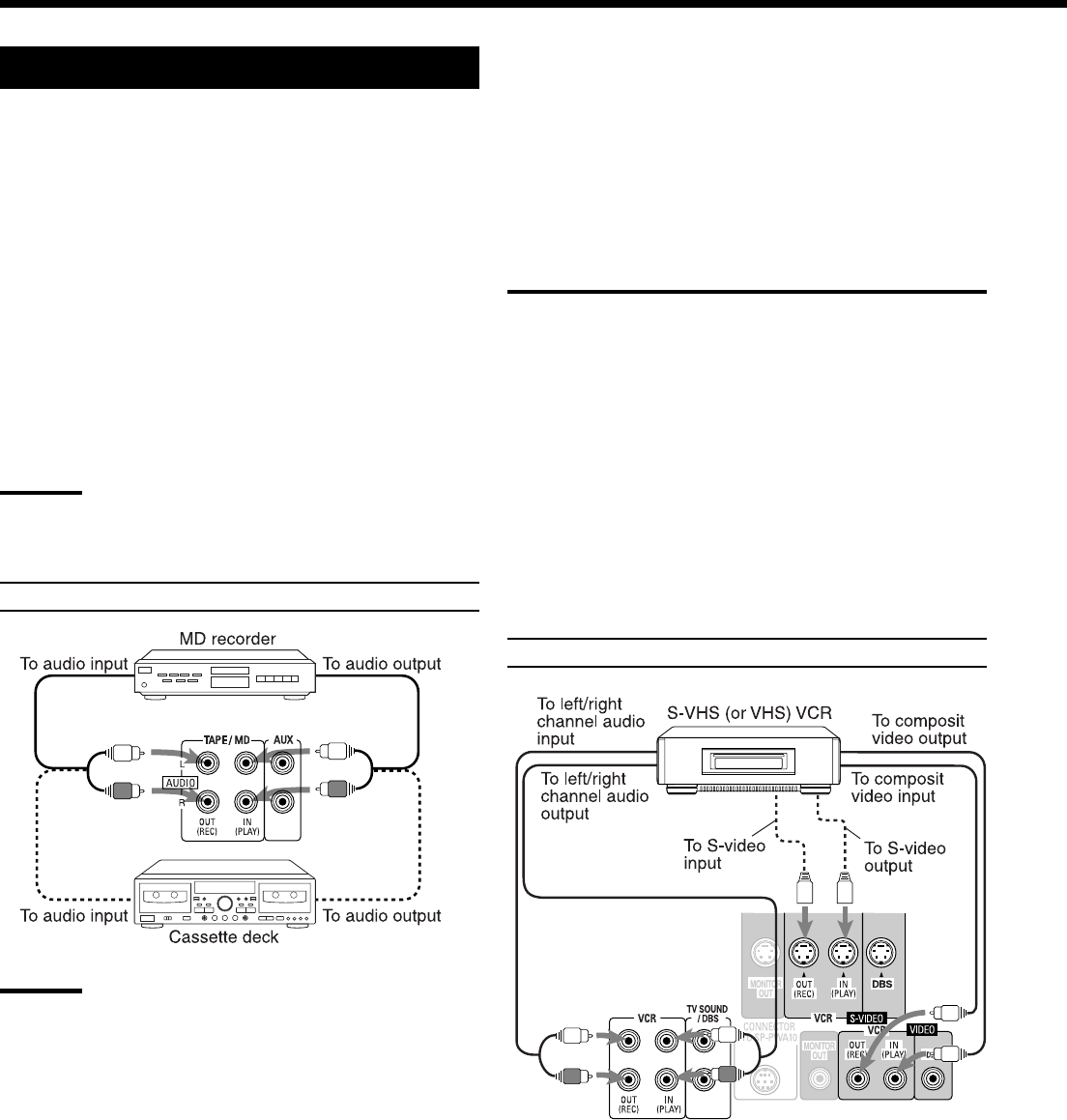
8
Connecting Audio/Video Components
You can connect the following audio/video components to this
system.
Refer also to the manuals supplied with your components.
Audio Components: Cassette deck or MD recorder*
Video Components: TV or DBS tuner*
VCRs
* You can connect these components using the methods described
in “Analog connections” (see below) or in “Digital connections”
(see page 9).
Analog connections —————————————
Analog component connections
Use the cable with RCA pin plugs (not supplied).
Connect the white plug to the audio left jack, and the red plug to the
audio right jack.
CAUTION:
If you connect a sound-enhancing device such as a graphic
equalizer between the source components and the center unit, the
sound output through this system may be distorted.
Cassette deck or MD recorder
Notes:
• When the DSP mode is ON, the VCR OUT (REC) jack and the
TAPE/MD OUT (REC) jack will output surround sound to the
front speakers only.
When recording, turn the DSP mode OFF (see page 21).
• You can connect either a cassette deck or a MD recorder to the
TAPE/MD jacks. When connecting a MD recorder to the TAPE/
MD jacks, change the source name, which will be shown on the
display when selected as the source, to “MD”. See page 17 for
details.
If your audio components have a COMPU LINK-3 terminal
• See also page 54 for detailed information about the connection
and the COMPU LINK-3 remote control system.
Video component connections —————————
Use the cable with RCA pin plugs (not supplied).
Connect the white plug to the audio left jack, the red plug to the
audio right jack, and the yellow plug to the composite video jack.
If your video components have S-video (Y/C-separation) terminals,
connect them using S-video cable (not supplied).
Connecting these video components through the S-video input/
output terminal will give you better picture playback (or recording)
quality.
IMPORTANT
This system is equipped with both the composite video and S-video
input/output terminals for connecting video components.
You do not have to connect both the composite video and S-video
terminals.
However, remember that the video signals from the composite video
input terminals are output only through the composite video out
terminals, while the ones from the S-video input terminals are
output only through the S-video output terminals.
Therefore, if a recording video component and a playing video
component are connected to the center unit through the different
video terminals, you cannot record the picture from the playing
component on the recording component. In addition, if the TV and a
playing video component are connected to the center unit through
the different video terminals, you cannot view the playback picture
from the playing component on the TV.
VCR
Connections
TH-A10[J]1/1 00.2.24, 14:478


















